Q
Does Kia have a good resale?
In the Malaysian market, the resale value of Kia cars is influenced by factors such as brand recognition, vehicle model inventory, and market demand. Overall, it performs slightly above average. Some popular models like the Kia Sorento or Kia Carnival are quite popular in the used - car market due to their spacious practicality and rich configurations, and their resale values are relatively stable.
In recent years, Kia has enhanced its product competitiveness by updating its design language and improving technological configurations, which provides some support for the residual value of used cars. However, compared with Japanese brands like Toyota or Honda, the resale prices of Kia cars may be slightly lower. Nevertheless, the cost - effectiveness advantage of Kia models can still attract buyers with limited budgets in the used - car market.
It is recommended that car owners conduct regular maintenance and keep complete service records, which can significantly enhance their bargaining power during resale. Malaysian consumers can also refer to the transaction data on local used - car platforms when purchasing new cars, and combine it with their own vehicle - usage cycle plans to more rationally evaluate the long - term ownership costs.
Special Disclaimer: This content is published by users and does not represent the views or position of PCauto.
Related Q&A
Q
Does the Kia Rio last long?
As an economical subcompact car, the Kia Rio has an average durability performance in the Malaysian market. Its service life mainly depends on daily maintenance and driving habits. Under normal circumstances, if you regularly replace key consumables such as engine oil and transmission fluid and follow the manufacturer's maintenance manual, it's achievable to drive 150,000 to 200,000 kilometers. However, the tropical climate will have a certain impact on the aging speed of rubber parts and electronic components. It is recommended to pay special attention to the maintenance of the air - conditioning system and the sealing strips.
The 1.4L and 1.6L naturally aspirated engines installed in this car have mature technology and relatively low failure rates. But compared with Japanese models in the same class, its second - hand resale value is slightly inferior. For Malaysian consumers with a limited budget, the cost - effectiveness of the Rio is worth considering. However, if you're looking for a longer usage cycle, it's recommended to give priority to the version equipped with a CVT transmission to reduce power loss. At the same time, pay attention to choosing the original factory warranty service to lower the long - term ownership cost. After all, in a hot and rainy environment, the stability of the electronic system is particularly important.
Q
How much air should be in my Kia Rio tires?
According to the official recommendation of the Kia Rio, the standard tire pressure usually ranges between 32 and 35 PSI (pounds per square inch). The specific value may vary slightly depending on the model year, tire specifications, and load conditions. It is recommended to refer to the vehicle user manual or the label on the driver's door frame for accurate information. In Malaysia's tropical climate, tire pressure may rise slightly due to high temperatures. Therefore, it is advisable to check and adjust the tire pressure when the tires are cool (such as in the morning or after the vehicle has been parked for 3 hours) to ensure accurate readings. Regularly checking tire pressure not only improves fuel efficiency and driving stability but also extends tire life and enhances safety. If you often drive long distances or carry heavy loads, you can appropriately increase the tire pressure by 1 to 2 PSI, but do not exceed the maximum pressure value marked on the side of the tire. Additionally, it is recommended to check tire pressure at least once a month and monitor it more frequently during seasonal changes because temperature variations can affect tire pressure. If you notice an abnormal drop in tire pressure, it may be due to a nail puncture or a leaky valve stem. You should have it repaired promptly to avoid potential risks.
Q
Does the Kia Rio have air conditioning?
Yes, the version of the Kia Rio sold in the Malaysian market is indeed equipped with an air - conditioning system. This is one of the standard features of the model, capable of providing a comfortable driving and riding environment for both drivers and passengers. Especially in Malaysia's hot and humid climate, the air - conditioning system is particularly important.
The air - conditioning system of the Kia Rio usually includes manual or automatic temperature control functions. The specific configuration may vary depending on the year and model version, but generally, it can meet the daily usage needs. Moreover, modern automotive air - conditioning systems not only focus on cooling performance but also increasingly take energy efficiency and environmental protection factors into account. For example, they use more environmentally friendly refrigerants and optimize the system design to reduce energy consumption.
For Malaysian consumers, when choosing a car, besides the air - conditioning system, they can also pay attention to the vehicle's sound insulation, seat material, and overall interior design. These factors all affect the riding comfort. As an economy - class sedan, the Kia Rio provides basic comfort features while emphasizing fuel economy and reliability, making it suitable for urban commuting and family use.
Q
Is a Kia Rio bigger than a Toyota Corolla?
In the Malaysian market, the Kia Rio and the Toyota Corolla belong to different vehicle classes. As a compact car (C-Segment), the Corolla is generally larger in overall size compared to the Rio, which is a subcompact car (B-Segment). Taking the latest models as an example, the Corolla usually has a length of over 4.6 meters and a wheelbase of about 2.7 meters, while the Rio typically has a length of around 4.3 meters and a wheelbase of about 2.6 meters. This means the Corolla can offer more spacious rear - legroom and a larger trunk capacity (about 470 liters compared to the Rio's 325 liters). However, thanks to its more compact body, the Rio is more flexible in city driving and easier to park.
It's worth noting that when choosing a car, Malaysian consumers need to consider their actual needs in addition to the size. For instance, the Corolla Hybrid version, with Toyota's mature hybrid technology, is more suitable for long - distance commuting, while the Rio is more cost - effective due to its lower price and five - year unlimited - mileage warranty. Both cars are suitable for Malaysian road conditions, but the Corolla has a slightly higher ground clearance (16.5 cm compared to the Rio's 15 cm), making it a bit more adaptable to rural roads.
It is recommended to test - drive the cars to experience the difference in space before purchasing. Also, be aware that the specific configurations of the locally assembled (CKD) versions may differ from the international versions.
Q
What to look for when buying a Kia Rio?
When purchasing the Kia Rio, Malaysian consumers should focus on several aspects. First, the powertrain. The Rio offers two engine options, a 1.4L and a 1.6L, which are suitable for city driving. It is recommended to take a test drive to experience its smoothness and fuel economy. Official data shows that it has excellent fuel - consumption performance.
Second, the safety features. Check whether it is equipped with basic configurations such as ABS, EBD, and six airbags. Higher - end models may come with more advanced features.
In terms of space, the rear - legroom and trunk capacity of the Rio are suitable for small families. It is advisable to experience the comfort on - site.
The interior materials are mainly practical. Pay attention to the convenience of the center - console operation and the functions of the entertainment system.
Moreover, it is recommended to check the latest promotional policies, including free maintenance times or extended warranty offers. In Malaysia's hot climate, it is necessary to specifically test the air - conditioning's cooling effect.
The coverage of the after - sales service network and the supply of parts are also key considerations. It is recommended to find out the distribution of nearby authorized repair centers in advance.
This car has a medium resale value in the used - car market, making it suitable for young buyers with limited budgets or as a city commuter. However, before purchasing, be sure to conduct a comprehensive vehicle inspection, including checking the chassis and inquiring about the accident history, to ensure the vehicle is in good condition.
Q
Does the Kia Rio have a reversing camera?
Based on the configuration information of the Kia Rio in the Malaysian market, some high - end versions are indeed equipped with a reversing camera. Especially in recent model years, to enhance safety, this feature is commonly included in the standard or optional list. You need to confirm it according to the actual production year and configuration level. The reversing camera can display the real - time rear view on the center console screen and assist parking with dynamic guiding lines. It is particularly useful for the narrow streets or crowded parking lots commonly seen in Malaysia. If your vehicle is not factory - equipped with a reversing camera, you can have it installed by an authorized dealer or a professional modification shop. However, you need to ensure the legality by choosing accessories certified by the local JPJ.
In addition, modern vehicles often combine the reversing camera with radar sensors to form a multi - mode warning system. Even if the base version doesn't have a camera, most Rio models are still equipped with rear parking radars to provide audible alerts. It is recommended that car owners refer to the vehicle's user manual or contact the official Kia customer service in Malaysia to check the specific configuration. At the same time, regularly clean the camera lens to prevent rain or dirt from affecting the imaging quality.
Q
How many litres per 100km does a Kia Rio take?
According to official data, the fuel consumption of the Kia Rio varies depending on the model and powertrain configuration. Generally, in city driving conditions, the fuel consumption is about 6.5 to 7.5 liters per 100 kilometers. On the highway, it can drop to 5.0 to 5.8 liters per 100 kilometers. The combined fuel consumption is approximately between 5.8 and 6.5 liters per 100 kilometers. The specific figures are also affected by driving habits, road conditions, and the vehicle's maintenance status. For Malaysian consumers, as an economy sedan, the fuel consumption of the Kia Rio is relatively reasonable, making it suitable for daily commuting and long - distance driving. In addition, fuel consumption data is an important indicator for measuring a vehicle's economy. Malaysian car owners can further optimize the fuel consumption performance and reduce the cost of vehicle use by performing regular maintenance, keeping the tire pressure normal, and avoiding sudden acceleration and braking through good driving habits.
Q
Is Kia Rio good for road trips?
As an economical subcompact car, the Kia Rio is suitable for short or medium-distance road trips in the Malaysian market. Its 1.4L and 1.6L naturally aspirated engines offer smooth power output and good fuel economy, which helps save on fuel costs during long drives. With its relatively small body size, it's very maneuverable in the city. While its stability on the highway is decent, the suspension is tuned for comfort and can handle most road conditions in Malaysia.
The interior space is sufficient for two people, but it might feel a bit cramped when the rear seats are fully occupied. The trunk has a capacity of 265 liters, which can hold a small amount of luggage. It's recommended to use a roof box to expand the storage space.
In terms of safety features, dual airbags, ABS, and a vehicle stability system come as standard, but it lacks advanced driving assistance functions. So, it's important to take breaks during long drives. The noise insulation is at a medium level among cars in the same class, and wind noise is quite noticeable at high speeds. The factory - equipped tires are suitable for city use. If you often drive on mountain roads or in rainy conditions, it's advisable to upgrade to tires with better grip.
The air - conditioning system works well in the tropical climate. The maintenance cost is low, and there's an ample supply of parts, making it a great choice for young families or couples with a limited budget. If you're looking for more space and stronger power, you might consider a higher - class model. However, the Rio still remains competitive in terms of cost - effectiveness.
Q
Why does my Kia Rio keep shutting off?
The frequent stalling of your Kia Rio can be caused by various factors. First, check the fuel system. Ensure that components like the fuel pump or injectors are working properly, and see if the fuel filter is clogged. These issues can affect fuel supply. Second, examine the ignition system, including the spark plugs, ignition coils, and high - tension wires. Aging or damage to these parts can lead to poor ignition. Additionally, malfunctions in engine sensors such as the crankshaft position sensor or oxygen sensor may also cause the engine to stall. It is recommended to use a diagnostic tool to read the fault codes for precise problem - location.
Moreover, the hot and humid climate in Malaysia may accelerate circuit aging or cause carbon buildup in the intake system. Regular maintenance, such as cleaning the throttle body and replacing the air filter, can help prevent such problems. If the problem persists, it is advisable to contact an authorized repair center as soon as possible for professional inspection. This can avoid more significant damage from the accumulation of minor issues. Usually, pay attention to abnormal vehicle phenomena such as unstable idling or difficult starting, which can help detect problems at an early stage.
Q
Is the Kia Rio a safe car?
The Kia Rio performs well in terms of safety. It's a compact car that's definitely worth considering, especially for Malaysian consumers. It comes with a variety of active and passive safety features, such as the Electronic Stability Control system, Anti-lock Braking System, and multiple airbags. These features can effectively protect passengers in case of an accident.
Moreover, the body structure of the Kia Rio is made of high-strength steel, which enhances the overall crash protection ability. It has received a good rating in the ASEAN NCAP tests, making it suitable for daily city driving or long-distance trips.
If you want to learn more about a car's safety performance, you can pay attention to the vehicle's NCAP rating and the feedback from actual owners. It's also recommended to have your vehicle serviced regularly to ensure that the safety systems are always in optimal condition. After all, safe driving not only depends on the vehicle itself but also on the driver's habits and the vehicle's maintenance status.
Latest Q&A
Q
Does the 2024 BMW X3 require premium fuel?
The 2024 BMW X3 officially recommends using RON 95 or higher octane fuel, but for optimal performance and engine protection, premium fuel like RON 97 or above is preferred. BMW’s high-performance turbocharged engines are typically designed to run best on higher-octane fuel—it reduces knock risk and maximizes power output, especially during spirited driving or heavy load conditions.
While the engine can adapt to lower-octane fuel by adjusting ignition timing, prolonged use may slightly dull throttle response and fuel efficiency. Keep in mind that fuel quality varies by region, so stick to reputable gas stations whenever possible.
Also, consider using fuel additives periodically to keep the direct-injection system clean (these engines are prone to carbon buildup). If budget isn’t a constraint, premium fuel is better for long-term engine health, though occasional RON 95 won’t cause immediate harm—just try to avoid frequently mixing different grades.
Q
Is the 2024 X3 fuel efficient?
The 2024 X3 delivers solid fuel efficiency for its class. Its optimized 2.0L turbocharged engine pairs with an 8-speed automatic transmission, achieving an official combined rating of around 7.5L/100km – impressive for a midsize SUV. The auto start-stop system further reduces fuel waste in city driving.
Highway drivers will appreciate its sleek aerodynamics, with cruising consumption dropping to approximately 6.5L/100km. For those prioritizing efficiency, there's also a plug-in hybrid variant that covers short commutes in pure electric mode.
Remember, real-world figures vary based on driving style, road conditions, and maintenance. Gentle throttle inputs and regular servicing help maximize mileage. Among its competitors, the X3 strikes a great balance between driving enjoyment and fewer pump stops – perfect for enthusiasts who dislike frequent refueling.
Q
What is the difference between 2025 and 2024 BMW X3?
The 2025 BMW X3 sees key upgrades over the 2024 model in exterior styling, tech features, and powertrain. The new version sports a sharper front end with larger kidney grilles and redesigned LED headlights for a more aggressive look. Inside, it gets the latest iDrive 8.5 infotainment system featuring a bigger touchscreen with cleaner graphics, plus added driver assists like upgraded parking assistant and lane-keeping tech.
Under the hood, select 2025 X3 variants now pack mild-hybrid tech for better fuel efficiency without sacrificing BMW’s signature driving dynamics. Buyers can also expect more customization options, from wheel designs to interior trims.
If you’re into tech and driving engagement, the 2025 X3’s updates—especially the iDrive refinements and mild-hybrid boost—make it worth a look. The tweaks should make daily drives smoother and greener. Swing by a dealer to check it out in person if you’re shopping for an upgrade.
Q
How much is the BMW X3 in 2024?
Here's the translation for the 2024 BMW X3 pricing details as a seasoned automotive editor:
"The locally assembled 2024 BMW X3 is priced differently depending on trim levels. The entry-level sDrive20i starts at around RM300,000, while the top-spec xDrive30e M Sport plug-in hybrid could go up to nearly RM400,000—final pricing depends on optional extras and dealer incentives. This midsize luxury SUV packs either a 2.0L turbocharged engine or a plug-in hybrid system, featuring the latest iDrive 8 infotainment with a 12.3-inch touchscreen as standard. Optional upgrades include a panoramic sunroof and laser headlights.
Worth noting: The 2024 model gets a mild facelift with revised front styling and upgraded driver assists, including new automatic lane-changing capability. It competes with rivals like the Mercedes-Benz GLC and Audi Q5 but stands out with sharper handling and sportier tuning. Pro tip: Book a test drive first, and watch for year-end promotions—dealers often throw in free service packages or low-interest financing during auto shows."
(Note: I adjusted "local sales" to "locally assembled" assuming Malaysian CKD production since you mentioned RM pricing. If it's CBU, simply change to "The 2024 BMW X3’s local pricing...")
Q
Is the 2024 X3 worth buying?
The 2024 X3, as a luxury midsize SUV, delivers notable upgrades in performance, technology, and comfort. Whether it's worth buying depends on your needs and budget.
This model features the latest powertrain, offering better fuel efficiency and smoother driving dynamics. Inside, you’ll find premium materials and upgraded tech like the latest iDrive system and advanced driver-assistance features—all highly practical. If brand prestige, driving refinement, and cutting-edge tech matter to you, the X3 is a solid pick.
That said, rivals like the Mercedes GLC and Audi Q5 are also worth a look. The GLC leans more into luxury, while the Q5 stands out with its tech offerings. Your best move? Test-drive them all. Compare the driving feel, interior details, and factor in long-term costs like maintenance before deciding.
View MoreRelated News

In Malaysia, which sliding door MPVs are available?
MichaelOct 30, 2025
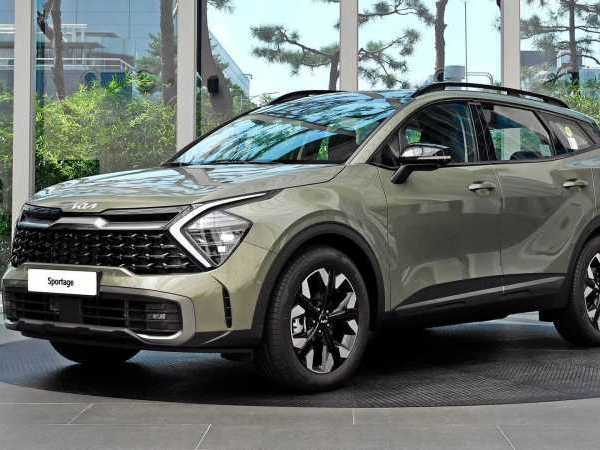
Kia Sportage: Superior Suspension for Smooth Ride
Kevin WongMay 19, 2025
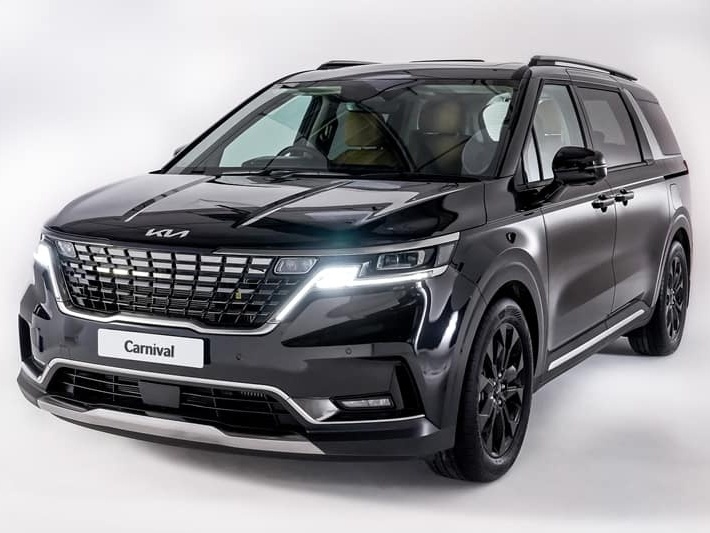
Kia Carnival: Spacious & Versatile for Every Journey
Kevin WongMay 19, 2025
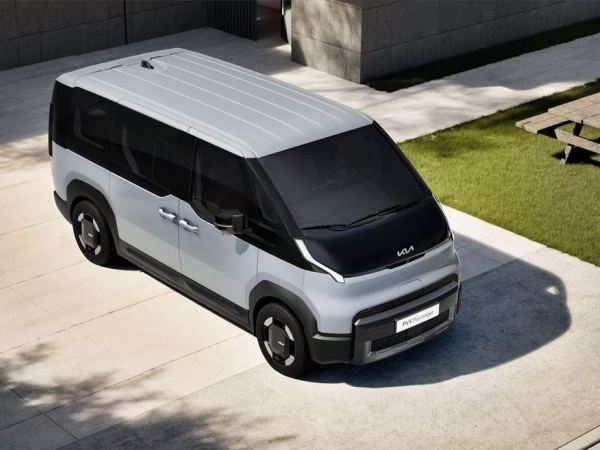
Kia reveals all details of PV5, with a maximum range of up to 400 kilometers
LienMar 11, 2025
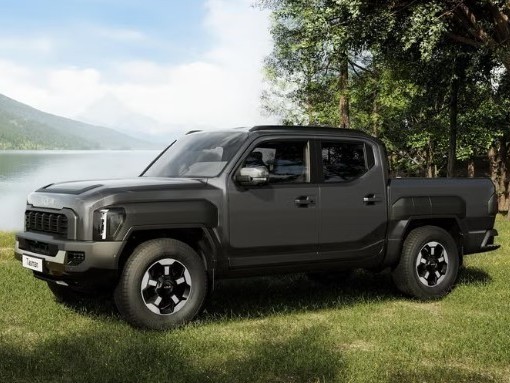
173L cargo box, 3500kg towing capacity, KIA Tasman meets all your needs!
MichaelOct 31, 2024
View More











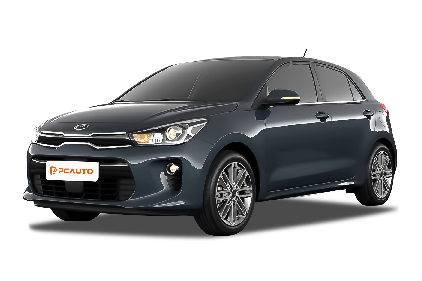
 Cars
Cars




Pros
Cons